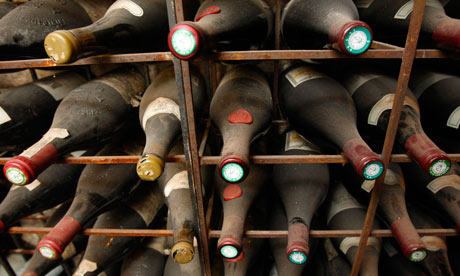
If you're the sort to constantly rail against wine markups in restaurants, a couple of recent developments might cheer you up a little. A new iPhone app called Wine Search has just been released which enables you to pinpoint exactly how big a markup restaurants are putting on the bottles on their list. And D&D, one of London's biggest restaurant groups, has announced it's reducing its margins on wines it lists at £50 and above (which given its restaurants include top city haunts such as Coq d'Argent and Le Pont de la Tour probably accounts for the majority of its bottles).
Most restaurants make a fixed cash margin on more expensive bottles of wine, and the percentage markups on cheaper wines can easily result in these going for three or four times the price you'd pay in a shop. Given that - unlike food - they don't appear to do anything to the bottle apart from pouring it that seems hard to justify, but there is another side to the case.
Top Michelin-starred kitchens rarely make much on their food. Even Heston Blumenthal admits he doesn't make any money at The Fat Duck - perhaps as he employs 44 chefs for 42 customers. For many restaurants in prime sites wine helps to pay the rent and keep down the cost of the menu.
There are also costs associated with wine service that people don't generally think about - buying and replacing glasses, wine storage at the correct temperature, faulty bottles that have to be returned - which can be difficult several years after purchase - but the biggest outlay is on purchasing and storing wine. It's all about cash flow.
The heftiest markups are of course on the world's best known wines, champagne being a particular culprit. I ran a quick check on one of the restaurant world's most popular champagnes, Billecart Salmon rosé, which ranged from £70 a bottle at Jamie's Italian (where bizarrely it's the only champagne on the list) to £125 at the award-winning The Kitchin in Edinburgh. Jamie's buying power presumably carrying considerably more clout than Tom Kitchin's.
So instead of sticking to the world's best known and most greedily priced bottles perhaps we should use restaurant visits as a chance to explore the more obscure corners of the wine world. If you worry about looking like a cheapskate agonising over the wine list while the sommelier hovers, don't: wines like Marcillac and Falanghina are likely to go better with the food than fine wines which have been released too early. If it's a special occasion check out the wine list on the restaurant website before you go so that you don't get sweet-talked on the spot.
Almost all restaurants, even the most expensive ones, have bargains. Even at Gordon Ramsay's revamped restaurant at the Savoy where a bottle of Petrus is listed at £2,000 you can find a bottle of Côtes du Roussillon Villages for £21.
So maybe it's our own fault if we get ripped off. Are we too keen to impress - or insecure about our own wine knowledge - to order more obscure wines or ask the waiter or sommelier for advice? Do markups get you hot under the collar or do you accept them as part of the price you pay for going out to eat?







